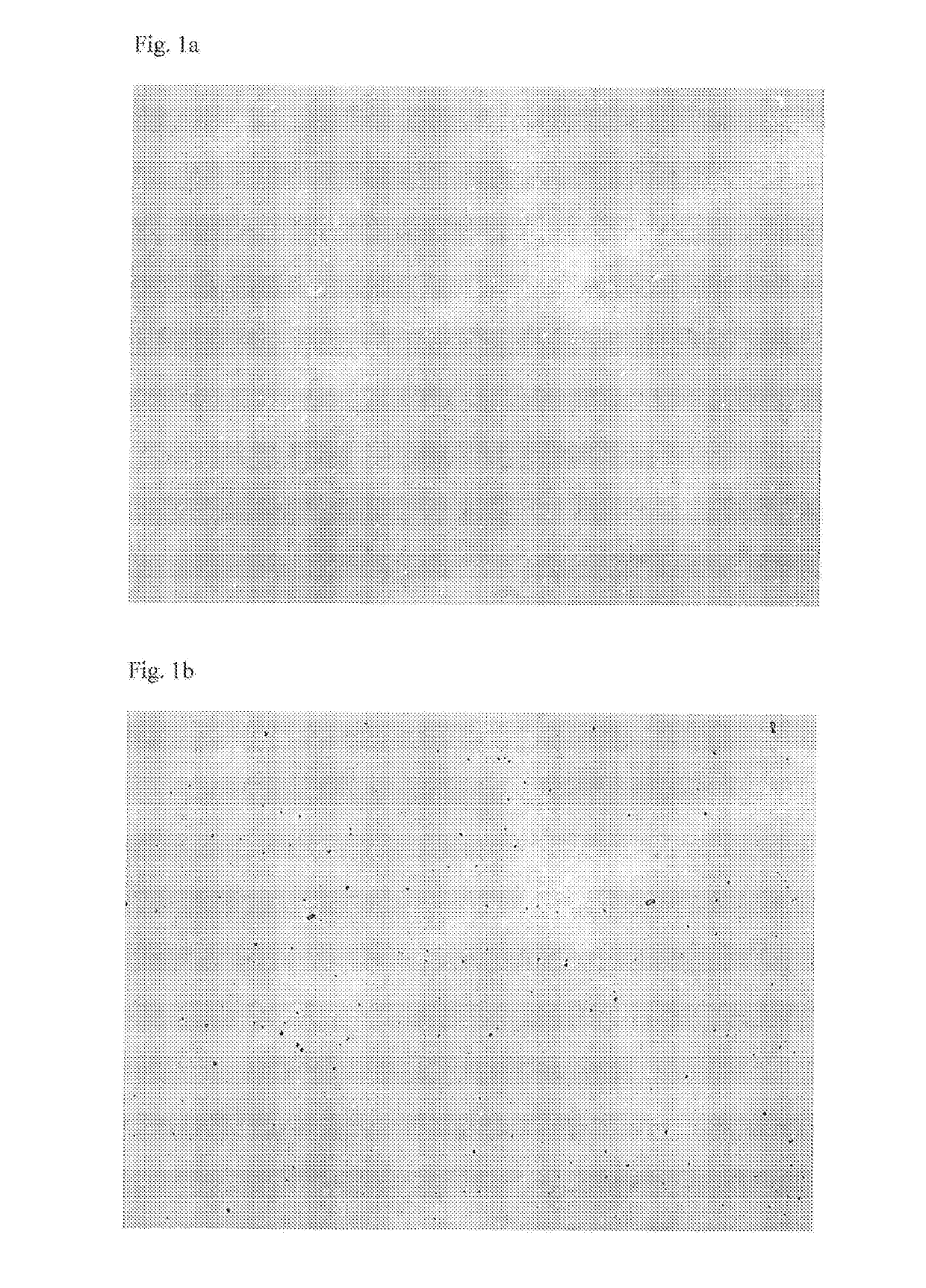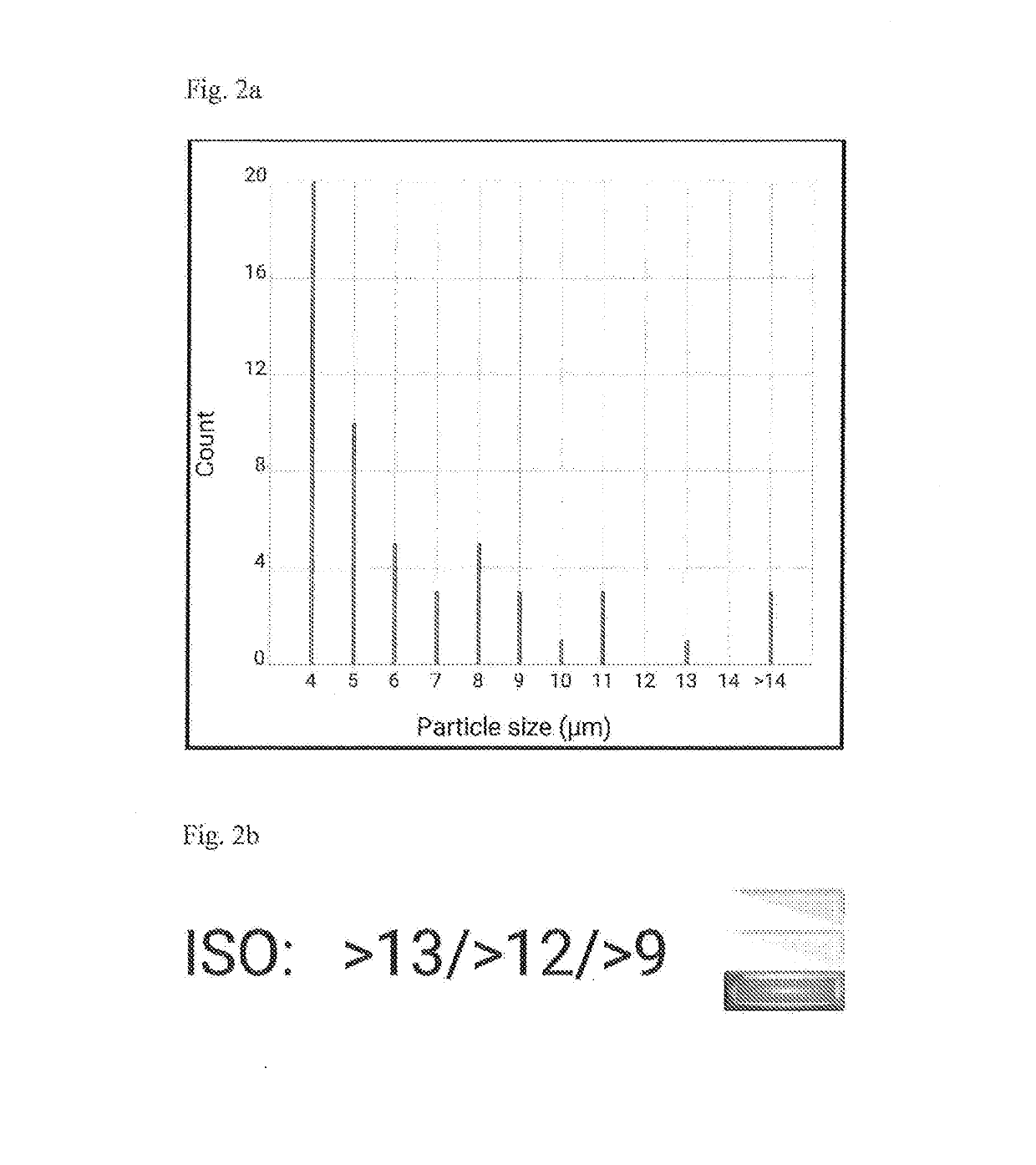Oil Analysis
a technology for oil and oil suspension, applied in the field of oil analysis, can solve the problems of oil becoming contaminated by particulates, unnecessary expenses, and high cost and time consumption, and achieve the effects of reducing the risk of contamination, and reducing the quality of oil
- Summary
- Abstract
- Description
- Claims
- Application Information
AI Technical Summary
Benefits of technology
Problems solved by technology
Method used
Image
Examples
example 1
g Wear Particles from an Oil Sample
[0080]A filter paper holder comprising a funnel and a cover was washed with white spirit. A filter paper, 13 mm in diameter and having a pore size of 3 μm, was inserted into the wet cover using tweezers, and the funnel then screwed into the cap.
[0081]A 10 ml sample of used gear oil and 10 ml of white spirit was extracted into a syringe via rubber tubing. The rubber tubing was attached to an inlet in the cover of the filter paper holder. An outlet in the funnel of the filter paper holder was attached to the inlet of a waste container. The syringe was used to push the diluted oil sample through the filter paper.
[0082]The filter paper was washed with a further 10 ml of white spirit, extracted and delivered using the syringe and optionally rubber tubing.
[0083]The filter paper was removed from the filter paper holder and placed on a sample holder. The filter paper was left to air dry for about 10 minutes.
example 2
an Optical Image of the Separated Wear Particles
[0084]A Celestron® Digital Microscope Pro was attached to a mobile phone via a USB device. The microscope was positioned over the filter paper and instructions were sent from the mobile phone to the camera to capture an image and transmit the image back to the mobile phone. The separated wear particles were illuminated by a distributed light source when the image was captured.
example 3
the Image of the Oil, and Generating Information about the Condition of the Oil
[0085]The image was analysed using the mobile phone by a process in which the separated wear particles were identified and marked in the image. FIG. 1a shows the image taken by the camera; and FIG. 1b shows the image after wear particles have been identified and marked using the software application run on the processor of the mobile phone. Features including the size and number of the identified wear particles were determined.
[0086]Information on the cleanliness of the oil was output through a display on the mobile phone. FIG. 2a shows a graph of the number of particles of different sizes contained within the oil sample that was output through a display on the mobile phone. FIG. 2b shows the ISO classification that the oil sample was calculated to have from the image, and that was also output through a display on the mobile phone. A traffic light coding system, shown to the right of FIG. 2b, was further ...
PUM
 Login to View More
Login to View More Abstract
Description
Claims
Application Information
 Login to View More
Login to View More - R&D
- Intellectual Property
- Life Sciences
- Materials
- Tech Scout
- Unparalleled Data Quality
- Higher Quality Content
- 60% Fewer Hallucinations
Browse by: Latest US Patents, China's latest patents, Technical Efficacy Thesaurus, Application Domain, Technology Topic, Popular Technical Reports.
© 2025 PatSnap. All rights reserved.Legal|Privacy policy|Modern Slavery Act Transparency Statement|Sitemap|About US| Contact US: help@patsnap.com


